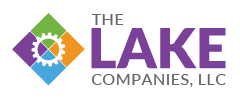Mastering Inventory Optimization: Simplifying Workflows in SyteLine ERP

In the fast-paced world of manufacturing, one of the most challenging tasks for businesses is balancing the need for efficiency with the complexities of inventory management. SyteLine ERP offers a robust solution for tackling this challenge, but the key to fully optimizing inventory lies in simplifying workflows.
When we talk about inventory optimization, we’re talking about more than just managing numbers. It’s about creating efficient processes to ensure that raw materials, component parts, work-in-process (WIP), and finished goods all flow smoothly through your operations. This efficiency allows you to meet delivery dates, reduce costs, and avoid unnecessary rush orders, all while maintaining optimal inventory levels.
Simplification: The Core of Inventory Optimization
The idea that simplicity drives success is not new. As Lou Holtz, the famous Notre Dame football coach, once said, “It’s not the load that breaks you down, it’s the way you carry it.” In business terms, this means that how efficiently you handle internal processes has a far greater impact than the size or complexity of your operations.
One of the first areas to focus on when simplifying workflows is WIP. The more jobs you have in process, the heavier the load on your operations. By reducing the number of WIP items and ensuring that jobs move quickly from one stage to the next, you effectively lighten the load. A typical scenario involves starting a job, only to have it sit unfinished because a downstream work center isn’t ready to handle it. This creates bottlenecks and increases the overall workload. Efficient inventory optimization eliminates these roadblocks by keeping jobs moving, reducing interruptions, and ensuring smoother transitions between stages.
The Pitfalls of Trying to Boil the Ocean
A common mistake in inventory optimization is trying to “boil the ocean”—taking on too many improvements at once. While it’s tempting to address every issue immediately, this approach rarely succeeds. Instead, businesses should focus on a few high-priority areas, making incremental improvements that lead to significant long-term gains.
To start simplifying, it’s critical to baseline your current operations. Take a snapshot of your inventory levels, sales, lead times, and WIP. This will give you a point of reference as you work toward improvements. With tools like SyteLine ERP’s Fact-Trak, you can easily capture this data and monitor it over time, helping you prioritize which areas need attention.
Streamlining Processes for Long-Term Efficiency
The goal of simplification is to make every task within your organization easier, not just for one department, but across the board. Simplifying inventory management doesn’t just benefit your inventory control team—it has a ripple effect throughout the entire organization. Streamlining tasks for the shop floor, for example, reduces the amount of time materials sit waiting, which in turn reduces WIP and improves throughput.
One of the most significant obstacles to inventory optimization is creating unnecessary barriers. For example, when inventory is marked as complete, but accounting insists on reviewing everything before it’s recorded, the process slows down. This kind of bottleneck can create a “dam in the river,” preventing work from flowing smoothly. Simplifying your processes by removing these obstacles helps maintain continuous workflow, reducing delays and unnecessary complexity.
Leveraging Automation for Success
Automation plays a crucial role in inventory optimization, but it must be done thoughtfully. Automation should simplify tasks for employees, not complicate them. If staff feel like they are working for the system rather than the system working for them, it’s a sign that your automation tools need adjustment.
For example, overloading employees with excessive data fields or requiring too many steps to complete simple tasks can lead to errors, which defeats the purpose of automation. Simplifying data collection processes, whether for receiving, shipping, or inventory tracking, ensures that automation is working for your business, rather than becoming a new source of inefficiency.
Simplifying workflows within SyteLine ERP is key to mastering inventory optimization. By focusing on reducing WIP, avoiding bottlenecks, and leveraging automation correctly, you can lighten the load on your operations and improve overall efficiency. The first step is always to measure where you are, prioritize your actions, and tackle simplification one step at a time. Don’t try to boil the ocean—instead, make focused, incremental changes, and you’ll see significant improvements in the long run.
For more information on how The Lake Companies’ can help your organization be much more successful in Simplifying Workflows in SyteLine ERP, contact us.


Comments are closed.